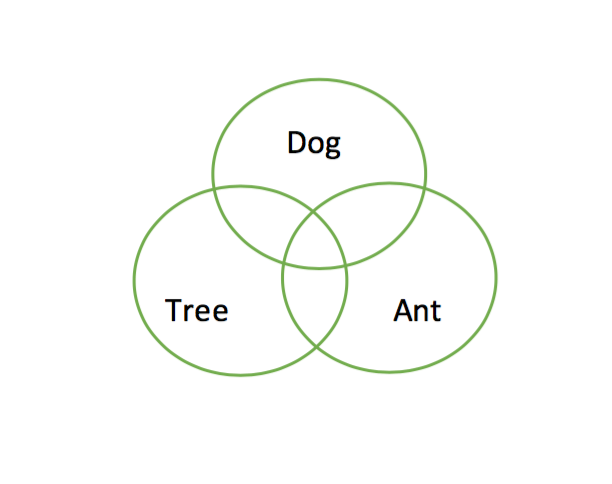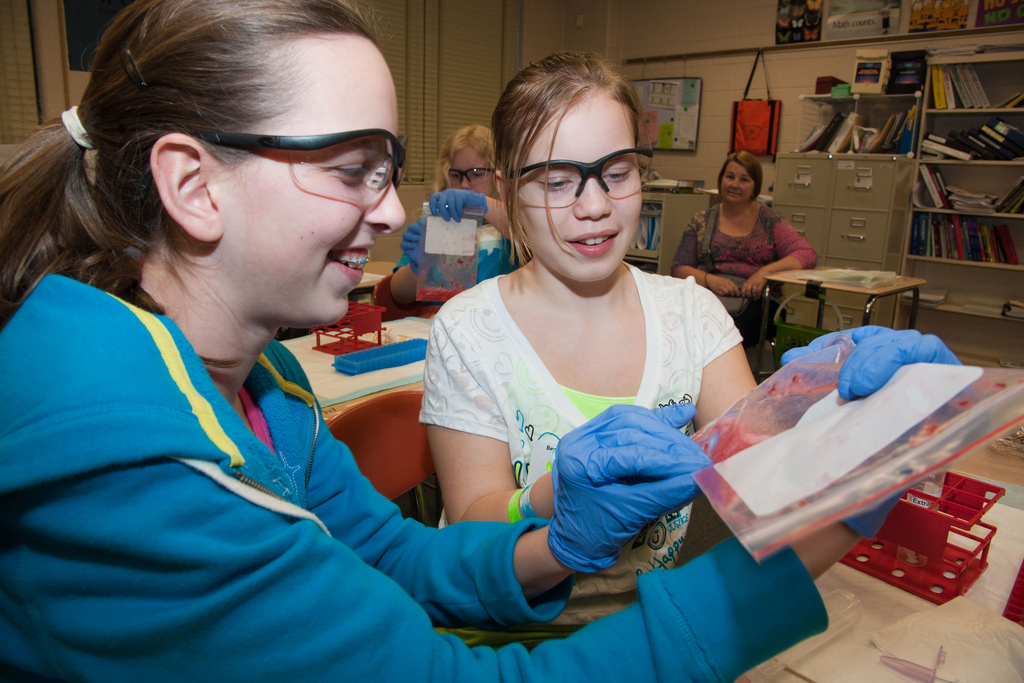My undergraduate degree is in science, so I’m keen on:
- supporting clients to study and succeed in STEM subjects – Science, Technology, Engineering, Mathematics; and
- using the latest cognitive science research to help clients achieve their school and life goals.
Starting high school is an exciting time – new school, new teachers, new friends, new subjects. I remember being overwhelmed, with 11 different subjects in my timetable, including English, Maths, History, Geography, and Science.
So much to learn!
STEM courses contain lots of specialised vocabulary and new concepts. Many students – including students with language, reading and other learning disorders – struggle with STEM subjects because of their limited vocabulary, conceptual, and categorisation skills.
So how can we help these students?
Here are six key cognitive science principles supported by research evidence:
Principle 1. Identify student misconceptions and prior knowledge
Students bring a range of misconceptions into the classroom. These can include:
- factual errors (e.g. ‘the Sun revolves around the Earth’);
- misunderstood vocabulary (e.g. ‘perimeter means the size of a shape’);
- simplistic models (e.g. ‘animals are things with legs’); and
- lack of understanding of scales (e.g. ‘the stars and the moon are the same distance from the Earth’).
These misconceptions need to be identified and corrected to help students to learn. Ideally, these misconceptions will be addressed before the introduction to a new topic. In reality, this can happen at any stage.
How?
(a) Identify what students already know, and what they think they know about the topic. You can do this with a general discussion, or a pre-quiz. For example: in a biology unit on ‘life’, you could ask the question ‘what does it mean for something to be alive?’.
(b) List misunderstandings. For example, a student may think that movement is a key feature of life. This may mean the student thinks that non-moving things (such as trees and flowers) are not alive.
(c) Correct these misunderstandings. Adult-driven explanations are not enough to do this (Schunn et al., 2018). Students need to overcome their own misconceptions. Adults can support students by:
- comparing student predictions with actual results. (e.g. If a flower isn’t alive, what might happen when we cut it from the root? If it is alive, what might happen?)
- structuring case comparisons. (Comparing properties of different examples from a category for similarities and differences.) (See Principle 2.)
- using visualisation. (Teaching students how to interpret images, tables, and graphs themselves, rather than relying on an adult.) (See Principle 3.)
Principle 2. Make Comparisons
This is simply the process of contrasting cases to identify similarities and differences. It:
- improves understanding of course content and test results (Alfieri et al., 2013);
- prepares students with basic conceptual understanding and can help address misconceptions; and
- is an especially important skill for students who have difficulties with semantic (meaning) knowledge and categorisation.
There are several templates available freely online which help students:
- learn about similarities and differences; and
- learn to compare and contrast concepts.
Free resource:
We like the (free) ‘Semantic Feature Analysis Grid‘ from Reading Rockets. This can be customised for any level of vocabulary or concept.
Example:
Begin listing various features (e.g. appearance, location, what it does) of different objects. For example, ‘tree’, ‘ant’ and ‘dog’. These all fall within the category of ‘life’, while only ‘dog’ and ‘ant’ are animals. By examining similarities, students can begin understanding which features are necessary for ‘life’, including the fact they all:
- are composed of cells;
- reproduce;
- are found on Earth; and
- are not man-made.
Some features only apply to dogs and ants, not trees. For example, only dogs and ants:
- have legs;
- eat food; and
- are able to move around.
These differences help students understand subcategories of ‘things that are alive’, such as plants versus animals.
For students who have trouble generating features, using a range of ‘wh’ questions can help structure their thinking (e.g. ‘What is it made of? What does it do? Where do you find it? When would you use it? What does it look like? How does it feel/smell/taste?’).
Principle 3. Complete visualisation Exercises
Many students have difficulty interpreting illustrations, which are often critical to understand content. Visualisation exercises help students learn how to interpret different aspects of visuals. For example, you can look at a diagram discussing the use of:
- colour;
- scale;
- arrows;
- axis titles;
- text boxes; and
- other conventions of diagrams and graphs.
How?
(a) Start with images that have only one feature requiring interpretation (e.g. scale or colour).
(b) Discuss what that feature represents and how to interpret it, as well as common conventions. For example: ‘Look at the legend to see what each colour means when interpreting a graph.’ or ‘The overlapping part of a Venn diagram illustrates the similarities. The non-overlapping parts represent the differences.’.
As students become more familiar with interpreting different features, begin introducing more complex illustrations. For example, create a Venn diagram of different things that are alive, and what they have in common (see Principle 2 for how to help generate these).

Principle 4. Interleaved practice
Blocked practice – where you study one subtopic or type of problem for a single long block of time – can lead to confusion between similar content. For example, between:
- different science concepts (e.g. gravity versus mass versus weight);
- different math techniques (e.g. calculating perimeter versus area versus mass); and/or
- different vocabulary (e.g. illusion versus allusion, compare versus contrast).
As we’ve discussed previously, ‘interleaved’ practice – where you mix up subtopics and different problem types – encourages comparison and contrast of content. (See Principle 2). It requires the student to understand when and how to apply the content (Rohrer, 2012).
How to do it
- When teaching a new concept, e.g. in mathematics:
- first, give several problems with the same formula. (This helps the student learn to apply the formula);
- then, give a mix of math problems that need the student to decide which formula to use.
- While studying/revising:
- don’t spend your whole time on one type of problem. This encourages rote completion of the task rather than active engagement; and
- instead, practice over several days and do a variety of questions each day. This helps the student learn to discriminate between problems. They also learn when to apply each concept.
Principle 5. Overlearning
When do you stop a study session? After one correct answer or three?
Research suggests that it all depends on how long you have left before the test!
‘Overlearning’ means studying more after the student has ‘mastered’ the content (e.g. continuing to practice vocabulary after one correct response). ‘Overlearning’ helps in the short-term, but the gains fade rapidly over time. So:
- if there’s only one week until the test – overlearning appears to be beneficial. Cram away!
- if the test is a longer time away – say more than three weeks – it may be more time efficient to move on to another concept. You can then revisit concepts after a break (see Principle 6).
Principle 6. Spaced Testing (spacing + testing combined)
This is aimed at avoiding ‘forgetting’. It’s a combination of two evidence-based study tips:
- ‘Spacing’ – revisiting concepts after a delay; and
- ‘Testing’ – quizzing yourself on content, which is more beneficial than simply reviewing content.
In the main study cited below, the authors completed ‘Spaced Testing’ by:
- daily ‘warm-up’ questions; and
- end-of-section quizzes, with questions from current and previous sections of the unit. (Notice how this also incorporates ‘Interleaving’ – see Principle 5!).
Clinical Bottom Line
There’s a range of ways to support students with (and without) language disorders across STEM subjects. One way to help students is by applying cognitive science research principles. It’s likely that there is a cumulative impact to using these techniques together, rather than in isolation.
Related articles:
- How to improve exam results: 9 free evidence-based DIY strategies
- 10 great words to teach young high schoolers (and why) – with brilliant free resources
- Worried about the HSC? 8 practical (and free) things you can do this week to get ready
- Too many stories, not enough facts? Free tips and resources to boost your child’s knowledge and reading comprehension skills
- What else helps struggling readers? The evidence for “morphological awareness” training
- Helping older students with their reading comprehension. What should we teach and how?
- My child used to be so good at maths. What happened?
Key References:
- Schunn, C. D., Newcombe, N. S., Alfieri, L., Cromley, J. G., Massey, C., & Merlino, J. F. (2018). Using principles of cognitive science to improve science learning in middle school: What works when and for whom? Applied Cognitive Psychology, 32(2), 225-240.
- Alfieri, L., Nokes-Malach, T. J., & Schunn, C. D. (2013). Learning through case comparisons: A meta-analytic review. Educational Psychologist, 48(2), 87-113.
- Rohrer, D. (2012). Interleaving helps students distinguish among similar concepts. Educational Psychology Review, 24(3), 355-367.
- Rohrer, D., Taylor, K., Pashler, H., Wixted, J. T., & Cepeda, N. J. (2005). The effect of overlearning on long‐term retention. Applied Cognitive Psychology, 19(3), 361-374.
Image: https://tinyurl.com/ybe4uofl

Hi there, I’m David Kinnane.
Principal Speech Pathologist, Banter Speech & Language
Our talented team of certified practising speech pathologists provide unhurried, personalised and evidence-based speech pathology care to children and adults in the Inner West of Sydney and beyond, both in our clinic and via telehealth.


Leave a Reply